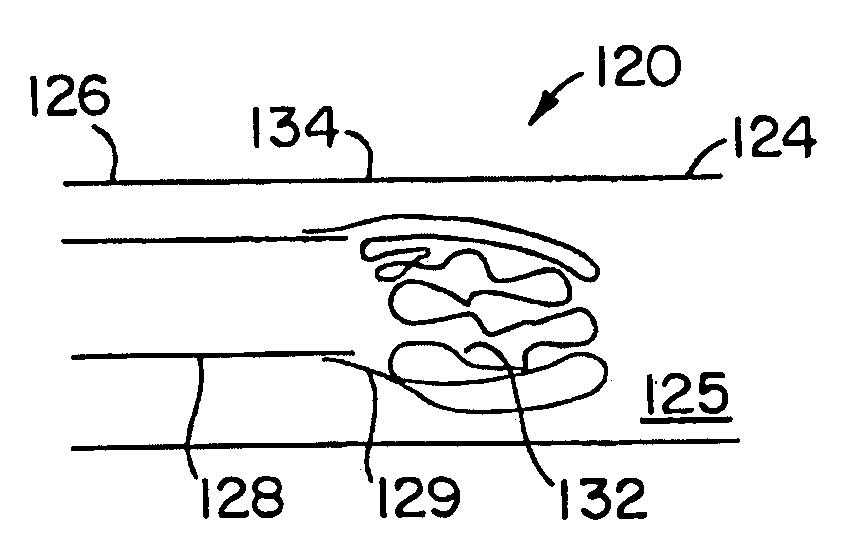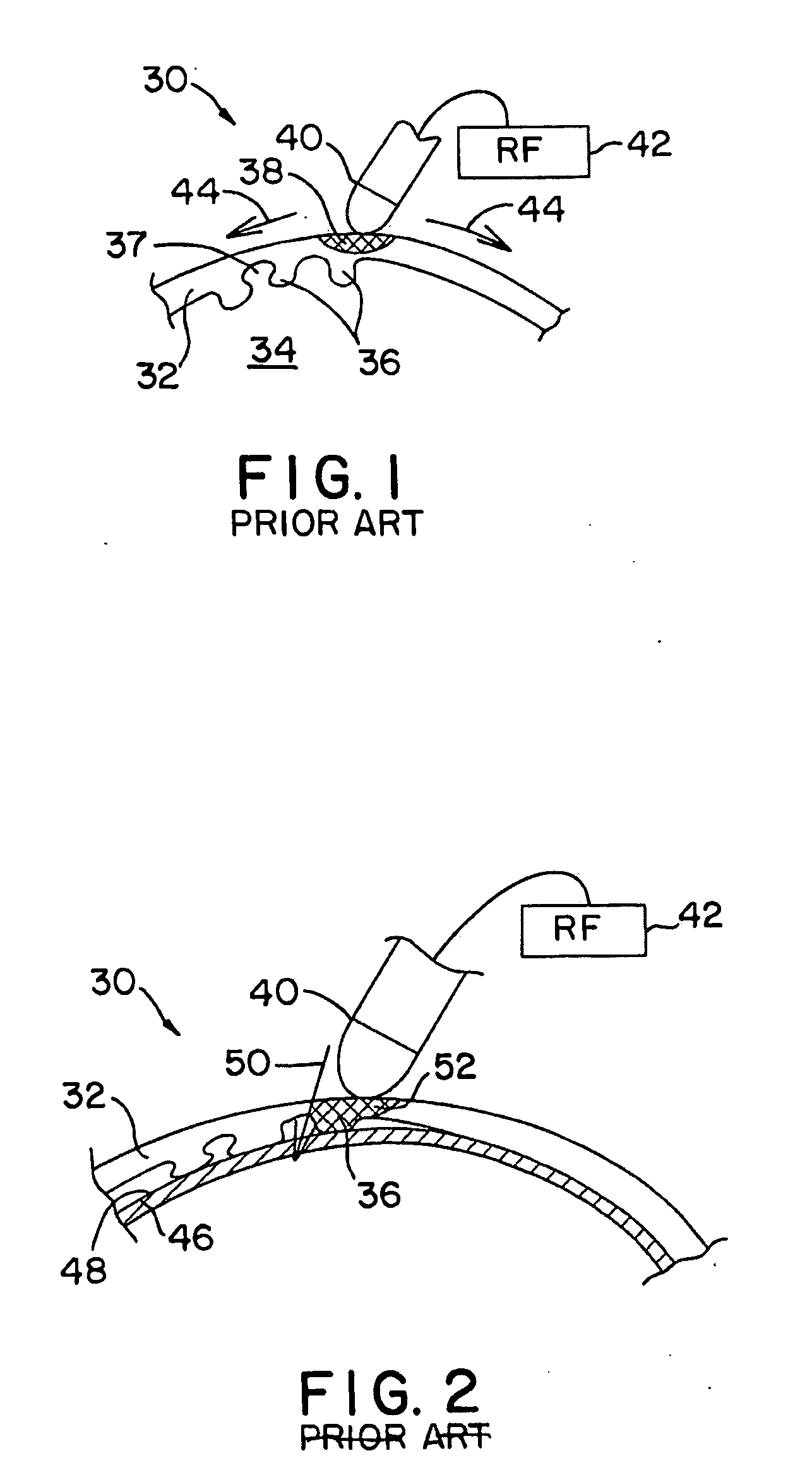Endocardial Dispersive Electrode for Use with a Monopolar RF Ablation Pen
a technology of endocardial dispersive electrodes and monopolar rf, which is applied in the field of devices for ablation of cardiac tissue, can solve the problems of disrupting the normal path of depolarization events, disrupting the normal propagation of electrical impulses, and disrupting the normal activation of atria or ventricles
- Summary
- Abstract
- Description
- Claims
- Application Information
AI Technical Summary
Benefits of technology
Problems solved by technology
Method used
Image
Examples
Embodiment Construction
[0035]FIG. 1 illustrates a prior art method for ablating cardiac tissue in the atria. In particular, a tribiculated region of the atria is illustrated. An atrial region 30 is illustrated, having an atrial wall 32, an interior 34, and tribiculated tissue 36 is illustrated, having gaps or cavities 37 disposed between the tribiculated tissue regions. A monopolar electrode 40 is illustrated, coupled to an RF energy source 42. A lesion area 38 formed from the ablation is also illustrated. In FIG. 1, a remote, indifferent electrode (not illustrated in FIG. 1) provides the return path for the RF energy supplied by monopolar electrode 40. As may be seen from inspection of FIG. 1, lesion area 38 is fairly wide, and does not penetrate into tribiculated tissue regions 36. The shallow and insufficiently deep lesions are formed due to the RF current dispersion, indicated at 44, as RF energy takes a path to the indifferent electrode that does not include penetrating directly into atrial wall 32. ...
PUM
| Property | Measurement | Unit |
|---|---|---|
| length | aaaaa | aaaaa |
| length | aaaaa | aaaaa |
| length | aaaaa | aaaaa |
Abstract
Description
Claims
Application Information
 Login to View More
Login to View More - R&D
- Intellectual Property
- Life Sciences
- Materials
- Tech Scout
- Unparalleled Data Quality
- Higher Quality Content
- 60% Fewer Hallucinations
Browse by: Latest US Patents, China's latest patents, Technical Efficacy Thesaurus, Application Domain, Technology Topic, Popular Technical Reports.
© 2025 PatSnap. All rights reserved.Legal|Privacy policy|Modern Slavery Act Transparency Statement|Sitemap|About US| Contact US: help@patsnap.com



